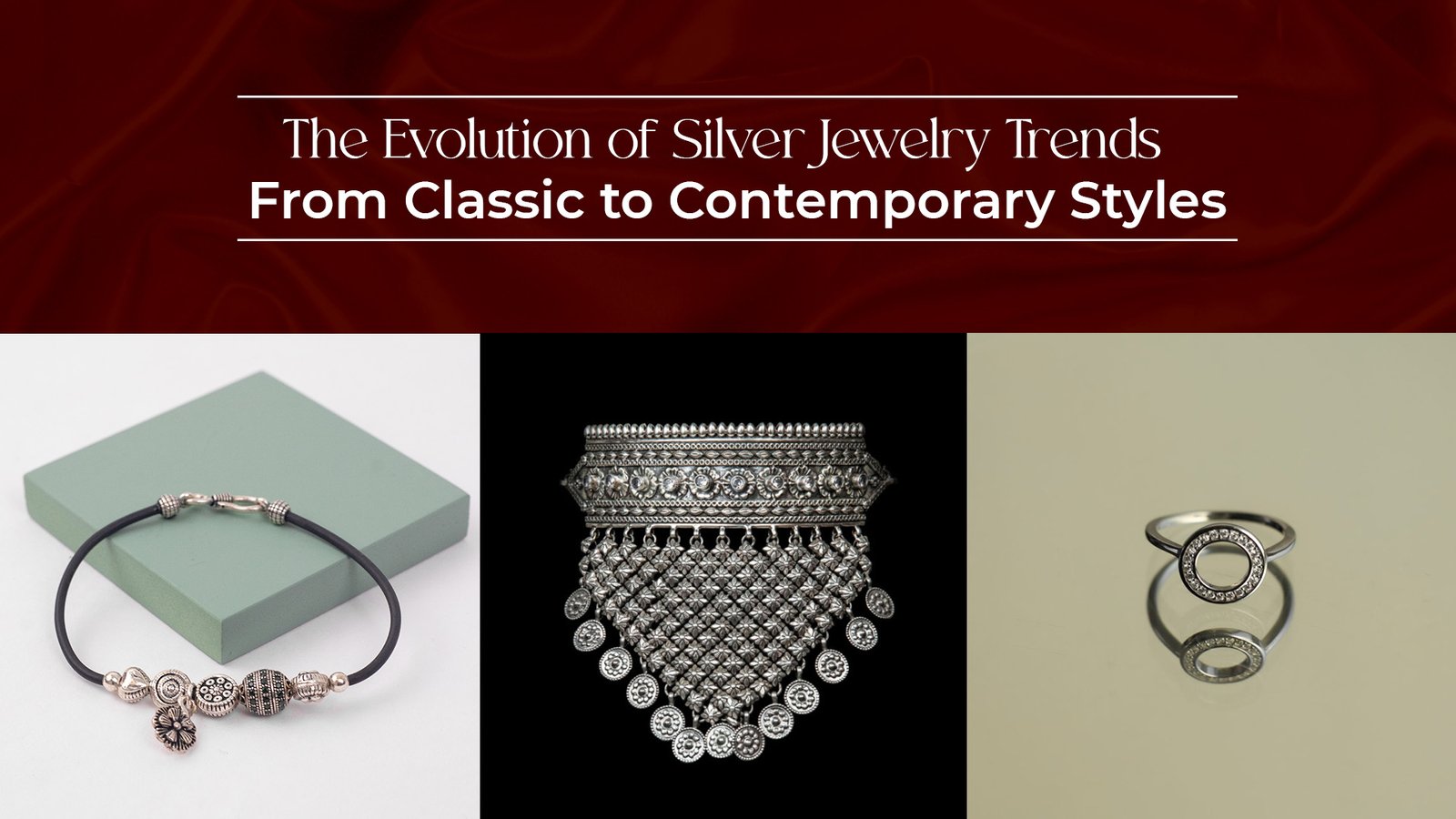The Evolution of Jewelry Trends. Jewelry has long been a symbol of status, culture, and personal expression. From ancient times to the present, jewelry trends have evolved significantly, reflecting changes in society, technology, and artistic sensibilities. This evolution is a testament to human creativity and our desire to adorn ourselves in unique and meaningful ways. The journey from classic to contemporary jewelry trends reveals how styles have adapted and transformed over the centuries while retaining their timeless allure.

The Timeless Allure of Classic Jewelry
Classic jewelry, characterized by its elegance and simplicity, has remained a staple throughout history. Ancient civilizations such as the Egyptians, Greeks, and Romans used precious metals and gemstones to create pieces that symbolized power, divinity, and wealth. For instance, the Egyptians favored gold and incorporated motifs like scarabs and the Eye of Horus, reflecting their spiritual beliefs. Similarly, the Greeks and Romans crafted intricate gold necklaces, brooches, and diadems adorned with pearls and semi-precious stones.
During the Renaissance, jewelry became even more elaborate, with the introduction of new techniques like enameling and gemstone cutting. This period saw a fascination with ornate designs, featuring intricate metalwork, religious symbols, and mythological motifs. The Baroque era that followed continued this trend with even more exuberant and theatrical designs, showcasing large gemstones, cameos, and pearls.
The Victorian era, named after Queen Victoria of England, marked a shift toward sentimental jewelry. Pieces from this period often featured lockets, cameos, and brooches that held miniature portraits or locks of hair. The intricate craftsmanship and romantic symbolism of Victorian jewelry made it both deeply personal and fashionable.
The Dawn of Modern Jewelry
The late 19th and early 20th centuries ushered in a new era of jewelry design. The Art Nouveau movement, which emerged in the 1890s, broke away from the rigidity of classic styles and embraced nature-inspired motifs, flowing lines, and asymmetry. Art Nouveau jewelry often featured enameling techniques and materials like opals, moonstones, and ivory, creating ethereal and whimsical pieces.
Following Art Nouveau, the Art Deco period of the 1920s and 1930s introduced a bold and geometric style. Influenced by the industrial age and cultural exchanges, Art Deco jewelry featured clean lines, sharp angles, and contrasting colors. This era embraced modernity and showcased new materials such as platinum and new gemstone cuts like baguettes and emerald cuts. Art Deco remains one of the most enduring and beloved styles, as its blend of elegance and modernity continues to inspire contemporary designers.
The mid-20th century saw a shift toward more minimalist and abstract jewelry designs. Influenced by modern art movements such as Surrealism and Abstract Expressionism, jewelers experimented with unconventional materials like plastics, wood, and synthetic stones. This era also saw the rise of notable designers like Coco Chanel, who popularized costume jewelry, making it accessible to a broader audience. The democratization of jewelry during this period allowed people from all walks of life to express their style without needing to invest in precious metals or stones.
Contemporary Jewelry Trends: A Fusion of Tradition and Innovation
Today’s jewelry trends are a fascinating blend of classic and contemporary elements. Contemporary designers often draw inspiration from historical styles while incorporating modern materials, techniques, and ethical considerations. For instance, minimalist jewelry that emphasizes clean lines and understated elegance reflects a return to the simplicity of classic designs. Yet, it is also marked by the use of sustainable materials, recycled metals, and conflict-free gemstones, aligning with modern values of sustainability and ethical consumption.
Another significant trend in contemporary jewelry is personalization. Consumers are increasingly seeking pieces that reflect their individuality, whether through custom engravings, birthstones, or bespoke designs. This trend echoes the sentimental jewelry of the Victorian era but with a modern twist. Technology, such as 3D printing and CAD design, has also revolutionized the jewelry industry, allowing for more intricate, innovative, and customizable designs.
Bold statement pieces have also made a resurgence in contemporary fashion, drawing inspiration from various periods, including the geometric shapes of Art Deco and the bold colors of the 1960s and 1970s. However, today’s statement jewelry often incorporates a mix of metals, textures, and unconventional materials, creating a unique fusion of past and present.
Conclusion
The evolution of jewelry trends from classic to contemporary is a reflection of changing tastes, technological advancements, and societal values. While classic jewelry continues to captivate with its timeless elegance, contemporary trends offer exciting new ways to express personal style and identity. This ongoing dialogue between the past and the present ensures that jewelry remains an enduring and dynamic form of art.
